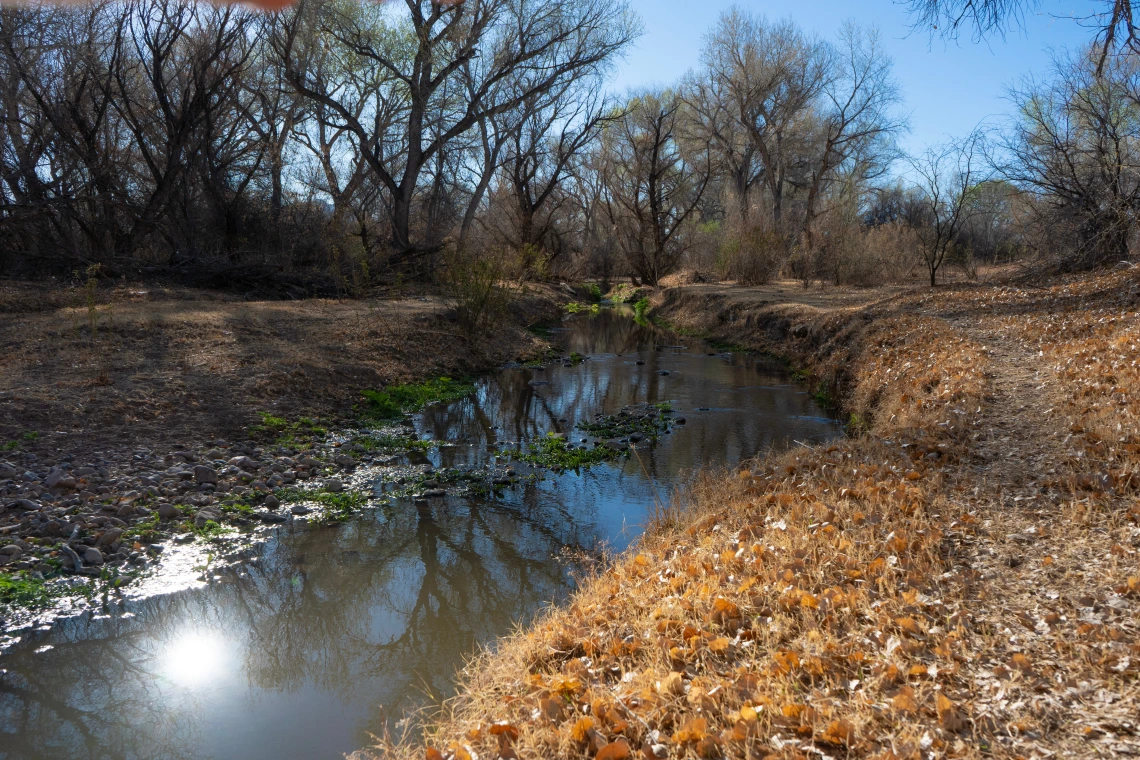Lower Santa Cruz River Basin Study Available

The Lower Santa Cruz River Basin Study, an analysis of the impacts of growth and climate change on the Tucson area’s groundwater basin, has been published by the Bureau of Reclamation.
This study is significant for several reasons, including its highly collaborative approach to project management as well as the extremely sophisticated first-of-its-kind modeling of the impacts of climate change on water supplies in the Tucson Basin. It considers impacts of Colorado River shortages as well as changes in temperature and precipitation on groundwater in the Tucson Basin. The study also prioritizes reliability of water supplies for riparian habitat as well as water for human use.
The partners developed six municipal growth and climate scenarios for the study area. Reclamation staff combined climate information developed by University of Arizona researchers with innovative computer modeling techniques to estimate future temperatures, rainfall, runoff, natural recharge and streamflow for the Santa Cruz Basin. These results were brought together with the groundwater pumpage estimates to assess future groundwater levels. While groundwater storage as a whole is projected to rise through 2050, modeling identified four “areas of concern” within the basin where groundwater levels will decline if no adaptation strategies are undertaken.
In the final stage of the study, adaptation strategies were elicited from a wide range of local experts and community members. Participants also developed ten evaluation criteria used to assess the strategies. Study partners developed cost, benefit, and other information and performed a trade-off analysis to identify the strengths and weaknesses of each strategy. The analysis concluded that multiple, complementary strategies will be needed to fully address the area’s water resources needs.
This study is the product of a partnership between the Bureau, the Southern Arizona Water Users’ Association, the U of A, the Central Arizona Project, the Arizona Department of Water Resources, the Pima Association of Governments, and the Cortaro-Marana Irrigation District.
SAWUA members played a key role by proposing the project, developing the Plan of Study, and focusing efforts on the direct needs of its partners. University of Arizona staff, including the Arizona Institute for Resilience's Center for Climate Adaptation Science and Solutions Director Katharine Jacobs and AIR Assistant Research Professor Neha Gupta, were active on the project leadership team throughout the 6 year effort, and contributed expertise to the study’s formulation, technical analysis, and community engagement.
Current and former faculty of the U of A Department of Hydrology and Atmospheric Sciences, Christopher Castro and Hsin-I Chang, played pivotal roles in the climate and surface water modeling analysis. Eve Halper led the effort on behalf of the Bureau of Reclamation, and Lindsay Bearup was the hydrologic engineer and lead modeler.
The Central Arizona Project developed the Supply and Demand Analysis, using its state-of-the-art CAP Service Area Model to envision how water providers could meet customer needs under a range of future conditions, including shortages to Colorado River supplies. Other contributors included the Arizona Department of Water Resources, which provided guidance for the use of its Tucson AMA groundwater model, and Pima Association of Governments staff, who organized and publicized the study’s public meetings and sponsored the Environmental Sub-team.
A project summary is available on the CCASS website.
For more information:
Kathy Jacobs, Center for Climate Adaptation Science and Solutions, Arizona Institute for Resilience
Wally Wilson, Water Resources Manager, Metro Water District

